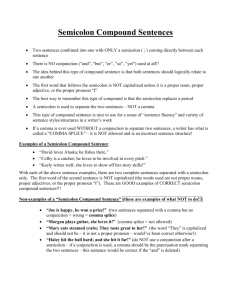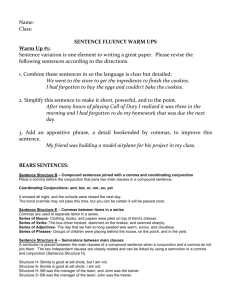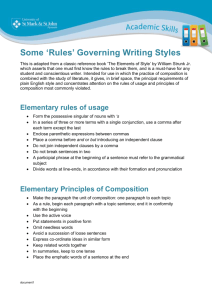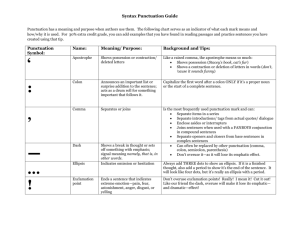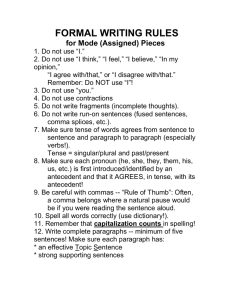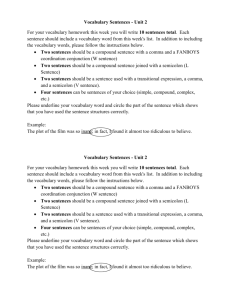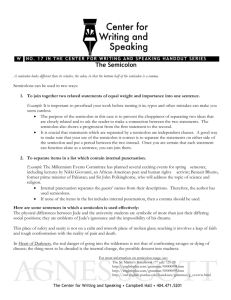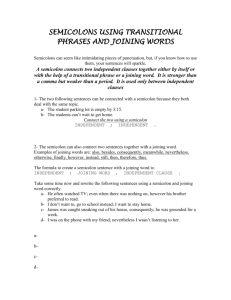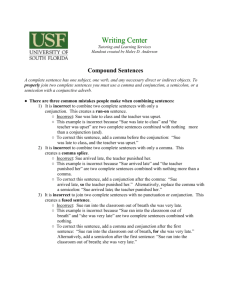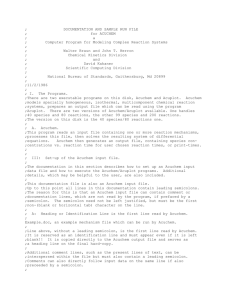Sentences Discussed in Class, with discussions
advertisement
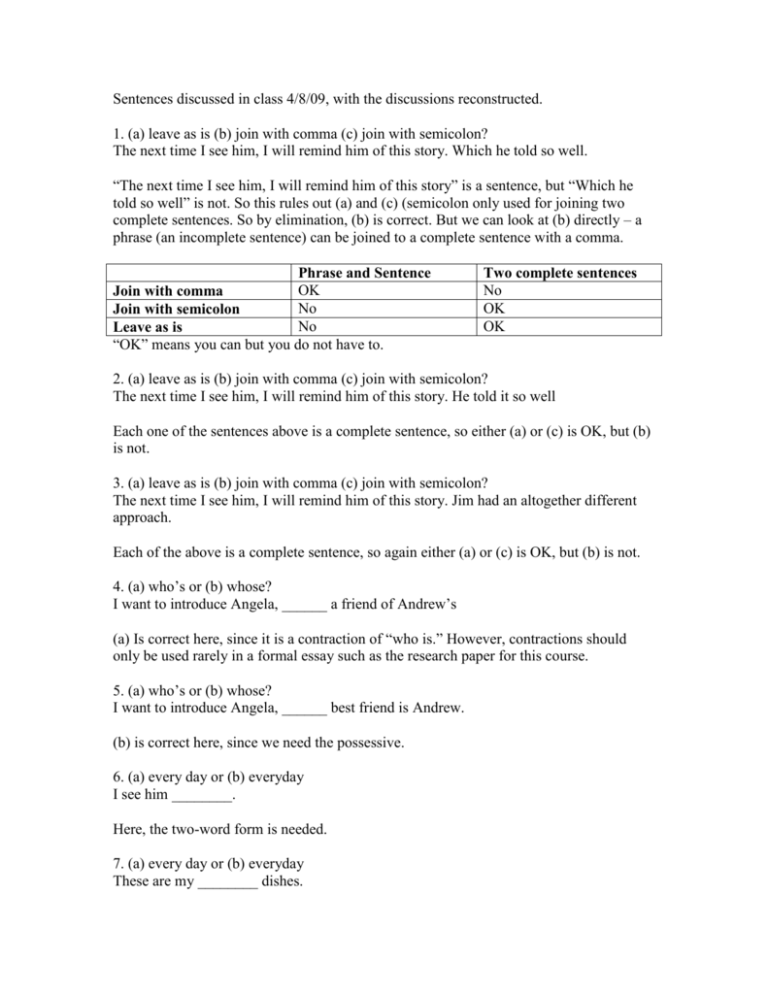
Sentences discussed in class 4/8/09, with the discussions reconstructed. 1. (a) leave as is (b) join with comma (c) join with semicolon? The next time I see him, I will remind him of this story. Which he told so well. “The next time I see him, I will remind him of this story” is a sentence, but “Which he told so well” is not. So this rules out (a) and (c) (semicolon only used for joining two complete sentences. So by elimination, (b) is correct. But we can look at (b) directly – a phrase (an incomplete sentence) can be joined to a complete sentence with a comma. Phrase and Sentence OK Join with comma No Join with semicolon No Leave as is “OK” means you can but you do not have to. Two complete sentences No OK OK 2. (a) leave as is (b) join with comma (c) join with semicolon? The next time I see him, I will remind him of this story. He told it so well Each one of the sentences above is a complete sentence, so either (a) or (c) is OK, but (b) is not. 3. (a) leave as is (b) join with comma (c) join with semicolon? The next time I see him, I will remind him of this story. Jim had an altogether different approach. Each of the above is a complete sentence, so again either (a) or (c) is OK, but (b) is not. 4. (a) who’s or (b) whose? I want to introduce Angela, ______ a friend of Andrew’s (a) Is correct here, since it is a contraction of “who is.” However, contractions should only be used rarely in a formal essay such as the research paper for this course. 5. (a) who’s or (b) whose? I want to introduce Angela, ______ best friend is Andrew. (b) is correct here, since we need the possessive. 6. (a) every day or (b) everyday I see him ________. Here, the two-word form is needed. 7. (a) every day or (b) everyday These are my ________ dishes. Here, the meaning is “common” or “ordinary,” so (b) is correct. 8. (a) leave as is (b) join with comma (c) join with semicolon (d) omit “This” and make it one sentence The public doesn’t understand this. The credit crunch. “The public doesn’t understand this” is a complete sentence, but “The credit crunch” is not (no verb here). So (b) is a possibility, but (d) makes the sentence simple a direct (a good thing). 9. (a) leave as is (b) split into two sentences after “us” (c) split into two sentences after “do” (d) insert a semicolon after “us” (e) insert a semicolon after “do” What we do is up to us the world is watching. “What we do is up to us the world is watching” is a run-on sentence (two complete sentences just butted up next to each other). So (a) is not acceptable. We could do (b) – this would end up with two short, active sentences, a good thing – or (d). 10. (a) leave as is (b) change comma to semicolon (c) insert semicolon after “trouble” (d) insert hyphen after “in” If we don’t do this, we could be in trouble credit may dry up. This is also a run-on sentence. The second sentence is “credit may dry up.” So (a) is not an option, but we could do (c).” Another good option not listed above is to write this as two simple, direct, active sentences (a good thing), thusly: “If we don’t do this, we could be in trouble. Credit may dry up.”
